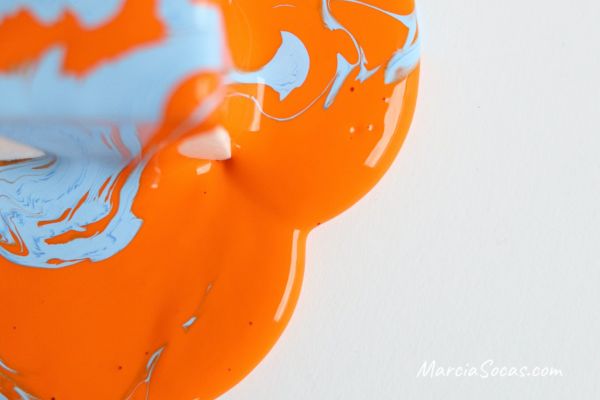How to Remove Paint From Tile
Have you ever accidentally painted your tiles? Or maybe you’re moving into a new home and the previous owners left behind some old paint stains? Whatever the reason, accidents happen. A paint spill or paint splatter on your tile can be a frustrating sight, but it doesn’t have to ruin your day. Don’t worry; paint removal from tile is a manageable task that can be tackled with the right tools and techniques. In this blog post, we’ll guide you through the process of safe and effective ways to remove paint from tile surfaces.
Throughout my site I provide affiliate links to products that I hope will help you with your DIY project supplies. As an Amazon Associate, I earn from qualifying purchases. This means that I may receive a small commission if you use these links to purchase products, but it does not change your price in any way.
There are a few simple methods for removing paint from tile, depending on the type of paint and how long it’s been there.
Materials you’ll need:
- Protective gear: Safety should always come first. Wear rubber gloves, safety goggles, and a dust mask to protect yourself from paint-toxic fumes and chemicals.
- Paint scraper, Plastic scraper, or utility knife: Choose a plastic scraper if possible, as it is less likely to scratch the tile. If you are using a utility knife, be very careful not to cut yourself.
- Soft clean cloth or sponge: Use a soft cloth or sponge to avoid scratching the tile.
- Warm, soapy water: A mixture of mild dish soap and warm water will be your primary cleaning solution.
- White vinegar (optional): White vinegar can be used to soften the paint and make it easier to remove.
- Lacquer thinner or rubbing alcohol (optional): Paint thinner and rubbing alcohol are solvents that can dissolve paint. These methods are effective for removing stubborn or dried paint, but they can also be harsh on tile, so it’s important to test them in an inconspicuous area first.
- Acetone: Use acetone or nail polish remover for more stubborn paint stains, but be cautious, as it can damage some tile finishes.
- Razor blade: A razor blade can be used for stubborn paint spots.
Step-by-Step Guide to Remove Paint from Tile:
Method 1: Scrape Off Excess Paint
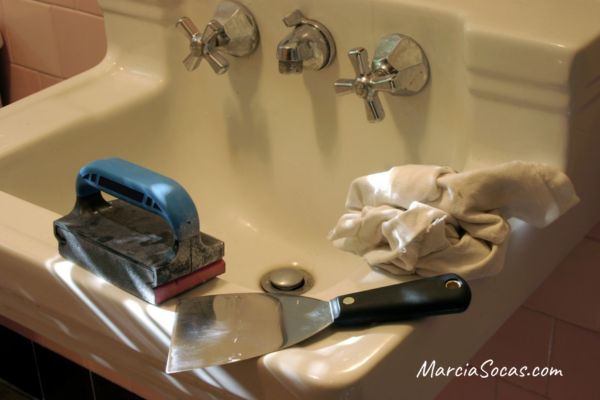
This method is best for removing fresh paint or lightly-dried paint.
- Start by identifying the type of paint. Water-based paint is generally easier to remove than oil-based paint. Always perform a test in a discreet area to determine the best approach.
- Gently use a plastic scraper or utility knife to remove as much paint as possible without scratching the tile. For stubborn spots, utilize a razor blade held at a low angle.
- Wipe the area using a wet cloth with a damp cloth to remove any remaining paint.
Method 2: Hot Vinegar Solution
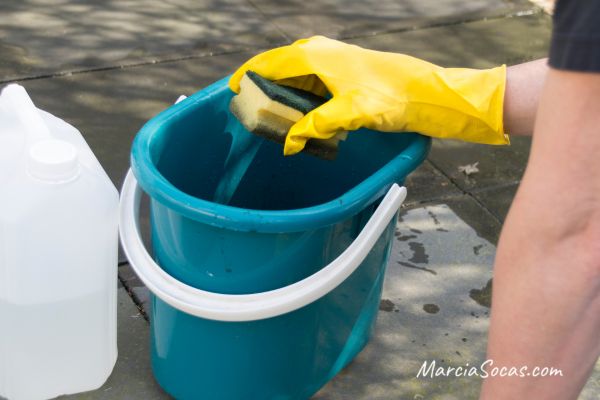
Vinegar is a natural solution and all-purpose cleaner that can also be used to remove paint from tile.
- Mix equal parts white vinegar and warm water in a bucket.
- Dip a soft cloth or sponge in the vinegar solution and apply it to the painted tile or stained area.
- Let the vinegar solution sit on the paint for a few minutes to soften it.
- Scrub the affected area with a cloth or sponge to remove the paint.
- Rinse the area with clean water and dry it with a clean rag.
Method 3: Paint thinner, acetone, or rubbing alcohol
Paint thinner, acetone, and rubbing alcohol are commercial solvents that can dissolve the paint. These methods are the best methods for removing stubborn or dried paint, but they can also be harsh on tile, so it’s important to test them in an inconspicuous area first.
- For any lingering paint stains, dampen a cloth with rubbing alcohol (for water-based paints) or Paint thinner/acetone (for oil-based paint).
- Apply the solvent to the painted area and let it sit for a few minutes to soften the paint.
- Scrub the area with a cloth or sponge to remove the paint.
- Rinse the area with plain water and dry it with a soft cloth.
Method 4: Commercial paint remover
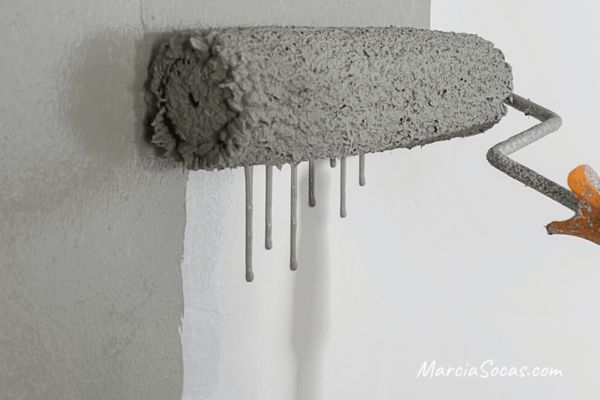
If the other methods aren’t working, you can try these alternative methods using a commercial paint remover. Be sure to follow the directions on the product label carefully.
- Ventilated the area well, ensuring proper air circulation, and don’t forget your safety gear – gloves, safety goggles, and a mask.
- Apply a small amount of commercial paint remover to the painted area following the manufacturer’s instructions. Typically, you’ll need to scrub brush or spray it onto the paint.
- Allow the paint remover to sit for the recommended time, usually around 15-30 minutes or as specified on the product label.
- Once the paint remover has had time to work, use a paint scraper or putty knife to gently lift off the softened paint. Be cautious not to damage the surface of the tile and the grout lines.
- For any remaining residue, use a soft cloth soaked in warm, soapy water to scrub the area. This will help remove any last traces of paint drips and the paint remover.
- Finally, clean the tile with your usual tile cleaner to restore its shine and ensure that no chemical residue remains.
Additional Tips:
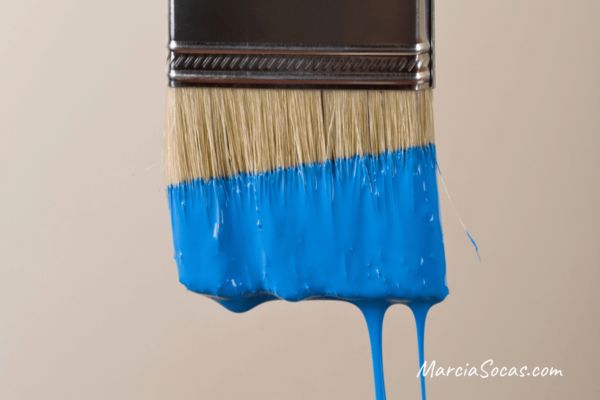
- Choose the Right Paint Remover: When opting for a commercial paint remover, make sure to select one that is suitable for your specific type of tile type and the type of paint you’re dealing with. Read product labels and follow instructions carefully or ask someone at the hardware store.
- Ventilation is Key: Proper ventilation is crucial when working with paint removers and other chemicals. Open windows and doors to ensure fresh air circulation in the workspace.
- Be patient: Take your time, especially when dealing with stubborn paint spots. Rushing the process may lead to tile damage. Allow paint softeners and removers to work effectively by following recommended wait times.
- Test in an Inconspicuous Area: Before applying any paint remover or chemical solution to the entire painted surface, test it in a hidden or small area of the tile to ensure it doesn’t harm the finish or discolor the tile.
- Avoid Rough Tools: While a gentle paint scraper or razor blade is helpful and a good idea, avoid using abrasive scrubbing pads or abrasive powders on tile, as they can scratch the surface.
- Clean Up Immediately: If paint spills or drips onto your tile, address it as soon as possible. Fresh or wet paint is easier to remove than dried-on paint and hardened paint.
- Prevention is Best: To prevent future paint mishaps, use painter’s tape and drop cloths to protect your tile surfaces during painting projects. When you’re painting, use short strokes and be careful not to overfill your paint roller, spray paint, or brush. Use a paint edger to help you paint around the outer edges and outside edge of your tile without getting paint on the tile itself. This proactive approach can save you time and effort in the long run.
- Seek Professional Help: If you’re unsure about tackling paint removal on valuable or delicate tile surfaces, or if you’ve tried various methods without success, consider consulting a professional tile cleaner or restorer for expert assistance.
Remember that each tile and paint situation may be unique, so adapt these tips and different methods as necessary to achieve the best results. With patience, the right materials, and a systematic approach, you can effectively remove paint from tiles and preserve the beauty of your surfaces.
